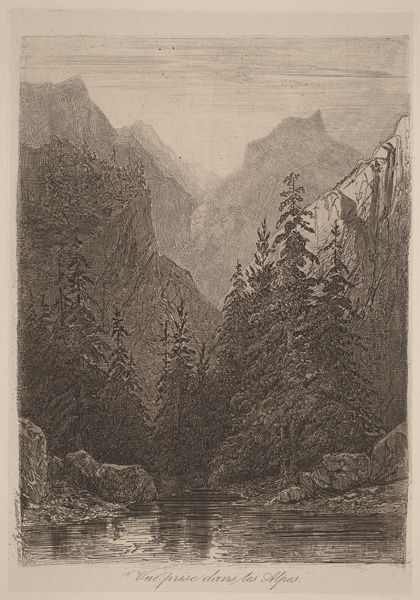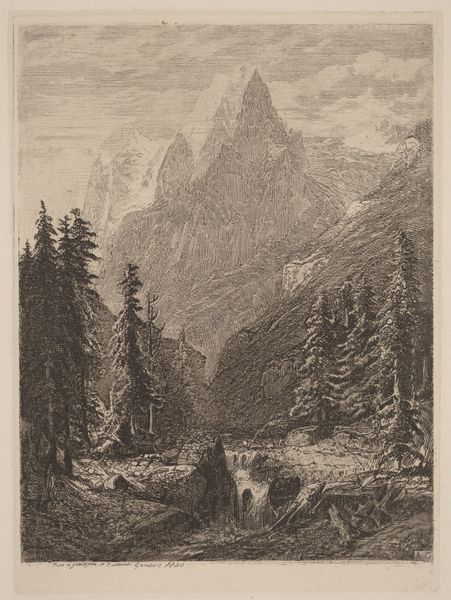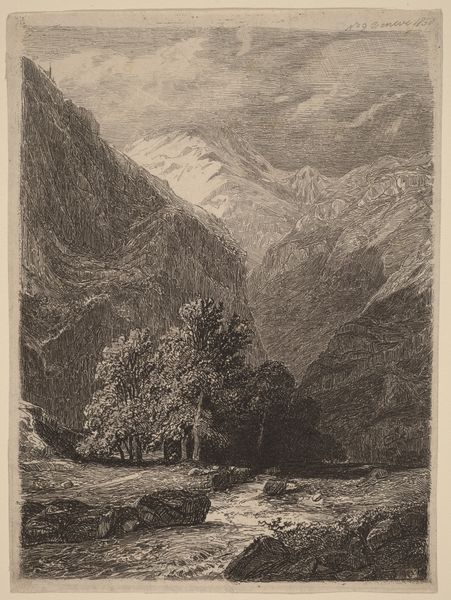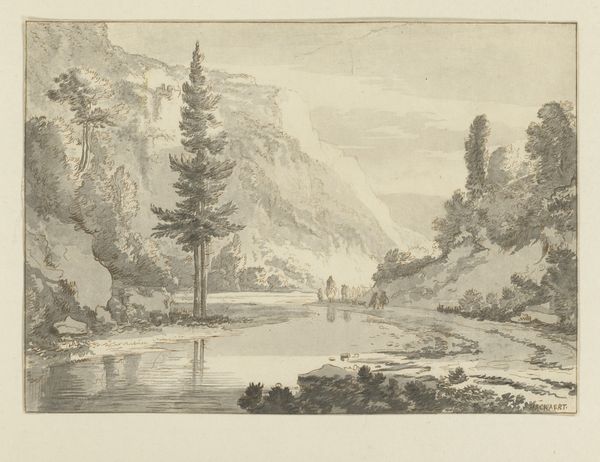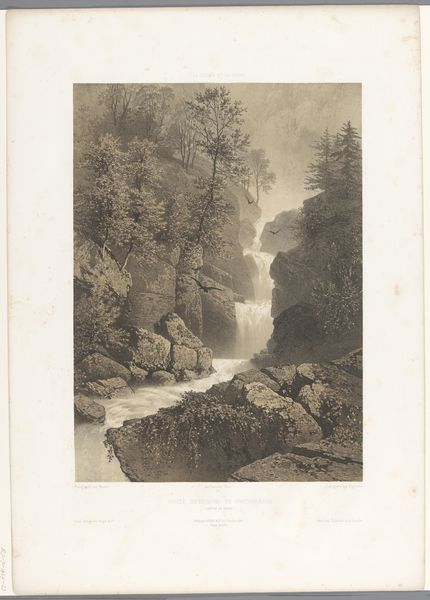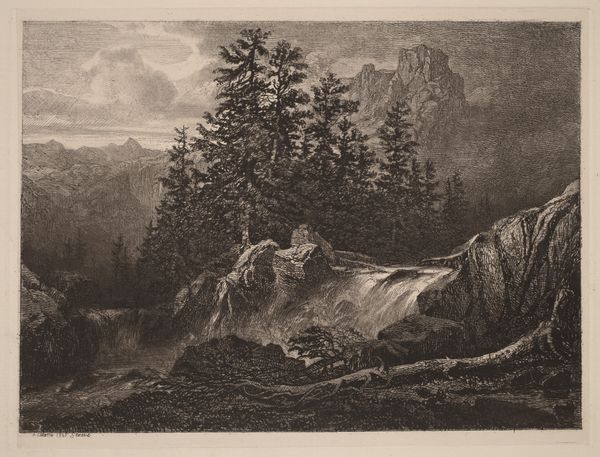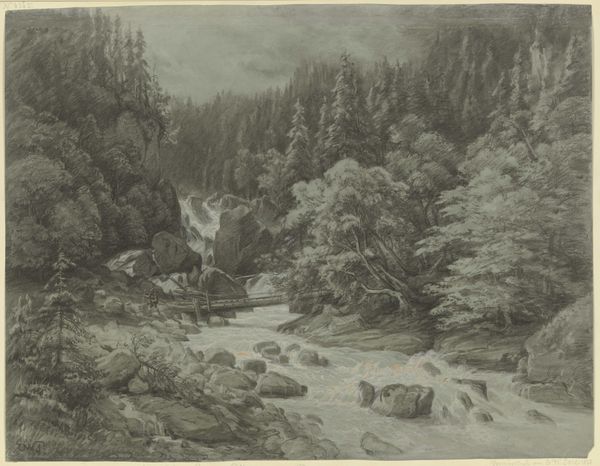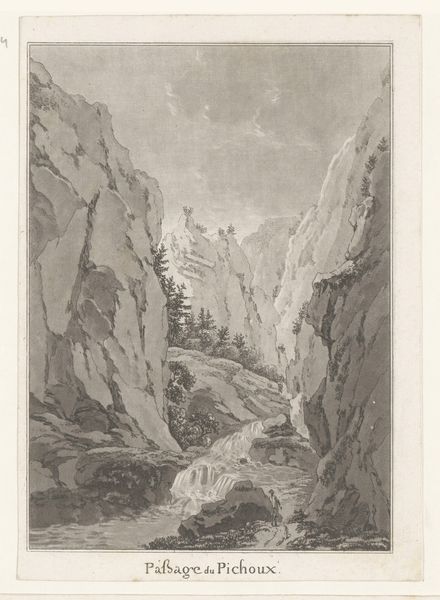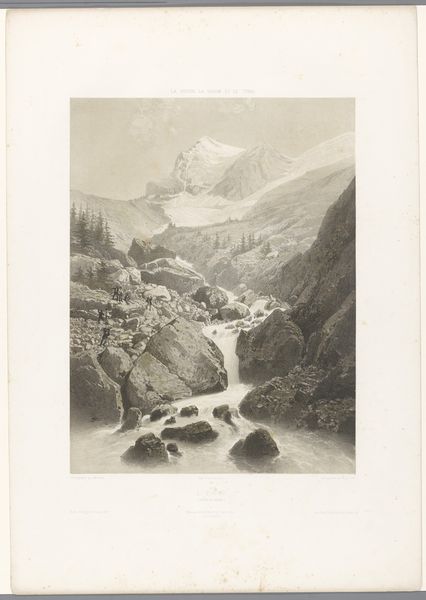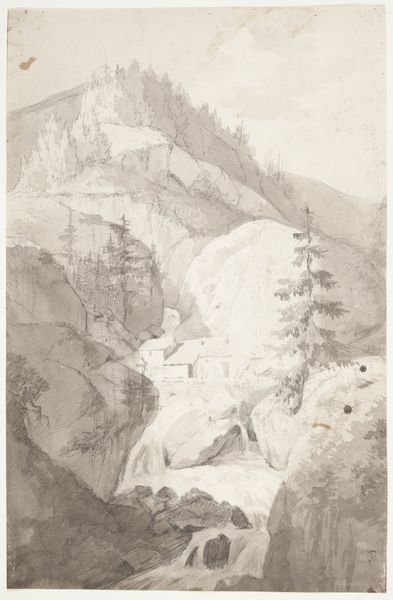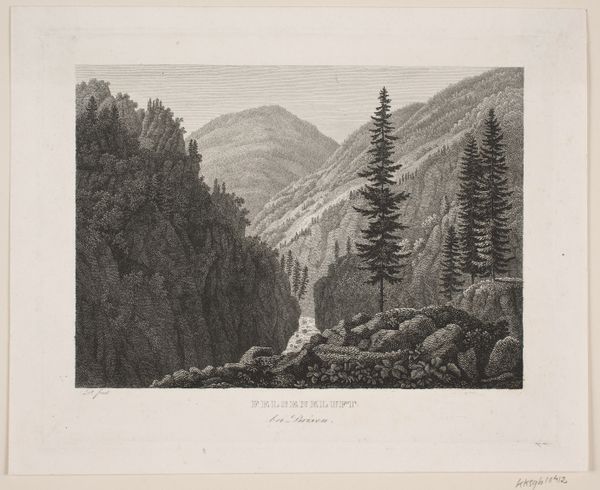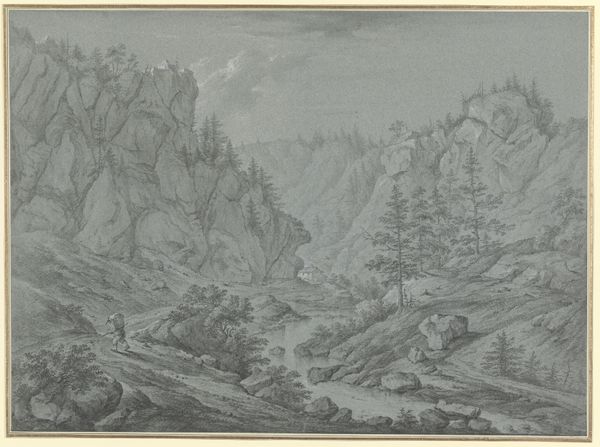
drawing, print, etching
#
drawing
# print
#
etching
#
landscape
#
figuration
#
romanticism
#
line
#
realism
Dimensions: Sheet: 14 7/16 × 10 7/8 in. (36.7 × 27.6 cm) Plate: 7 13/16 × 6 7/16 in. (19.8 × 16.3 cm)
Copyright: Public Domain
Editor: So, this is Alexandre Calame's "Landscape," an etching made sometime between 1830 and 1864. The overwhelming feeling is of a deep, isolated space. What strikes you most about this landscape? Curator: It's a masterclass in the Romantic ideal, wouldn't you say? Notice how Calame positions the viewer. We're placed on this rocky outcrop, separated from the sublime, vast expanse before us by the rushing water. This echoes a common Romantic theme: nature's overwhelming power juxtaposed against human insignificance. But is that *all* that it projects? Editor: I suppose not, or you wouldn't ask! It also makes me think of the sublime as both awe-inspiring and a bit frightening. The towering mountains feel protective, but the limited palette adds this layer of seriousness. Curator: Exactly. Consider too, the prevalence of evergreens. The presence of those resilient forms speaks to continuity and endurance, the enduring power of nature against the fleeting nature of human existence, our vulnerability against an ancient and overwhelming background. In an etching like this, the seemingly simple composition invites the viewer into this timeless cycle. What will you take from it? Editor: The symbolism is deeper than I initially saw, particularly the enduring presence of the trees, connecting human fragility with a more permanent world. Curator: Indeed, each viewing can excavate new meanings from symbols old and new.
Comments
No comments
Be the first to comment and join the conversation on the ultimate creative platform.
